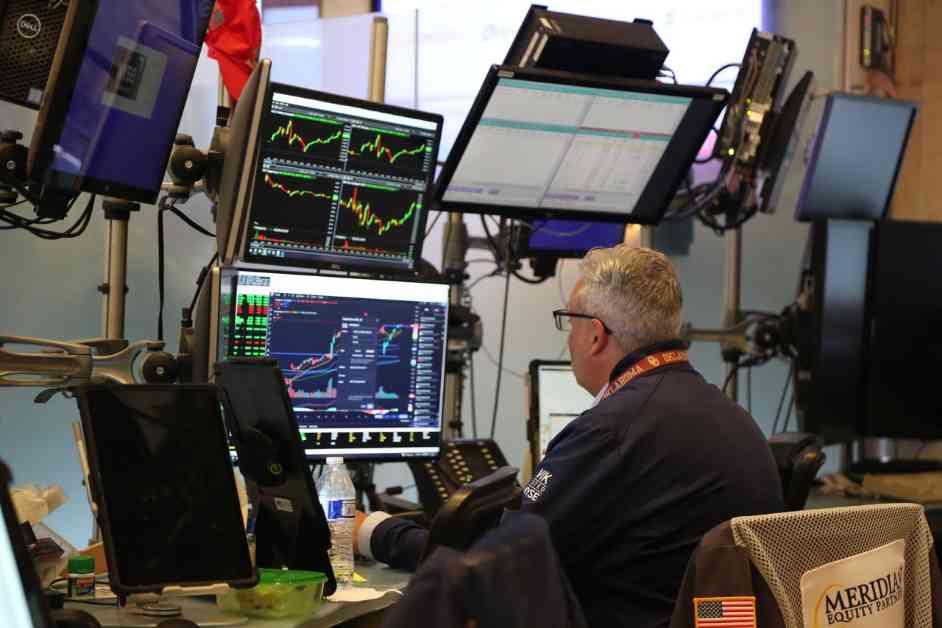Dow Jones Industrial Average Hits Historic High, Tech Stocks Drag Down Nasdaq
The Dow Jones Industrial Average reached a milestone by hitting a historic high, as investors attempted to prevent the significant sell-off that occurred earlier in the month. The Dow rose 65.4 points or 0.16% to close at 41,240.52 points. It surged over 200 points or 0.6% during trading before pulling back. However, the S&P 500 index fell 17.77 points or 0.32% to 5,616.84 points, while the Nasdaq Composite dropped 152.03 points or 0.85% to 17,725.76 points.
Traders appeared to pivot away from the tech sector towards other industries, with energy stocks in the S&P 500 rising by 1.01% while tech stocks declined by 0.99%. Nvidia fell 2.25% in after-hours trading on the 28th, with traders viewing its upcoming earnings report as a market catalyst and a gauge of the enthusiasm for artificial intelligence (AI) driving the bull market. Other chip stocks like Broadcom and Micron also experienced declines.
Baird analyst Ross Mayfield noted, “There are concerns in the tech industry surrounding Nvidia’s upcoming earnings report. The market is in a fairly healthy state, but if tech stocks continue to drag, it will be challenging to see substantial gains as they hold significant weight in the index, and currently, they are dragging it down.”
Amid worries about a potential economic downturn and popular hedge funds unwinding trades tied to the Japanese yen, the market faced pressure at the start of August, leading to stocks falling from their historic highs. The Nasdaq dropped by 3% on August 5th, marking the largest single-day decline since 2022.
However, expectations of Federal Reserve rate cuts and improving US economic data fueled a stock market surge. Since August 5th, the Nasdaq has surged by 8%, coming within 1% of its mid-July historic high, while the Dow has risen by approximately 6%. The rebound has extended to a broader market, with the small-cap Russell 2000 index also rising following comments from Fed Chair Powell.
The market experienced a strong week, with Fed Chair Powell’s comments laying the groundwork for rate cuts. Wall Street had been eagerly anticipating rate cuts, especially in light of some concerning economic data that triggered sell-offs at the beginning of August, along with concerns that rising borrowing costs could harm the US economy.
While Powell did not specify when or by how much rates might be cut, traders remain consistent in their expectations of a rate cut at the September policy meeting, according to the CME Group’s FedWatch tool.
CFRA Research’s Chief Investment Strategist Sam Stovall stated, “We believe that the Fed will cut rates by 25 basis points in September, November, and December, as they want the market to know they are not behind the curve, but at the same time, they also want to ensure they do not enter the rate-cut cycle too quickly.”
With rate cuts looming, Wolfe Research recommended that investors shift towards dividend growth strategies now. The company’s latest report highlighted, “Among the dividend themes we track, the combination of high dividend growth and high free cash flow yield has performed the best this year and remains our preferred dividend theme. Analysis of past Fed rate cut cycles indicates dividend growth outperforms higher dividend yield strategies.”
The report pointed out that dividend aristocrats, stocks with over 25 years of consecutive dividend growth, have performed the best.
Small-cap stocks outperformed large-cap tech stocks, creating a new trend identified by Piper Sandler, signaling that the market rebound is broadening beyond specific groups.
The Nasdaq, which is tech-heavy, rose by 1.5% last week. However, the Russell 2000 index, which focuses on small-cap stocks, surged by over 3%, indicating significant gains for stocks that have struggled for most of 2024.
Chief Market Technician Craig Johnson wrote in a note to clients, “This further proves that as market participation broadens in this recovery rebound, the ‘magnificent seven tech giants’ are turning into the ‘lagging seven tech giants.'”
Investors nervous about Nvidia’s earnings report released on the 28th may be best advised to consider broader defensive strategies, according to analysts at Bank of America.
Gonzalo Asis, a derivatives strategy analyst at the bank, suggested that investors should consider purchasing downside protection through options on the SPDR S&P 500 ETF Trust (SPY) ahead of Nvidia’s earnings report. The report highlighted, “Nvidia’s performance has been a key driver for the stock market; investors may be underestimating the risk of disappointment.”
While Wall Street reacted positively to Federal Reserve Chair Powell’s remarks at the Jackson Hole Symposium, Nomura strategist Yoshitaka Suda believes that the market will still face more volatility in the future.
In a recent report, Suda stated, “With investors reacting unexpectedly to upcoming economic indicators, the market may experience a bumpy journey ahead.”
Overall, the stock market continues to navigate various factors, from earnings reports to economic data and geopolitical tensions, as investors remain vigilant and adjust their strategies accordingly.












